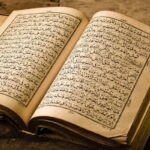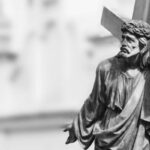We explain what Islam is, what its branches are, its history and main beliefs. Also, the place of women and what the Quran is.

What is Islam?
Islam is one of the great religions monotheists of the world the second most numerous after Christianity. It has around 1.9 billion followers worldwide (24% of the global population).
It is about an Abrahamic religion, such as Judaism and Christianity since it is identified with the religious tradition that recognizes Abraham (called Ibrahim by Muslims) as an ancestor and first patriarch, who according to sacred texts established a pact with God. However, Islam is distinguished from Judaism and Christianity because He believes that the last and most important prophet was Muhammad (Muhammad) called “messenger of God” and “seal of the prophets.”
The holy book of Islam is the Koran, considered the word of God revealed to Muhammad. Other important books are the compilations of hadith (singular, hadith), that is, sayings and deeds of Muhammad that serve as guides for the daily conduct of Muslims. It also accepts as sacred texts the Torah of the Hebrew Bible (also known as the Pentateuch and called Tawrat in Arabic), the biblical Psalms (called Zabur in Arabic) and the Gospel (called Injil in Arabic).
Islam exclusively worships Allah (Allah) whose name means God in Arabic and comes from the Semitic word Heused in the Bible. He is considered the only God and his graphic representations are not tolerated, which are judged as idolatry. Islam means “submission (to God)” in Arabic, and followers of Islam are called “Muslims” (from the Arabic muslim“that submits”).
Islam is divided into two main branches (Sunism and Shiism). Added to them is a third minority branch (Kharijism, today represented by the Ibadi movement) and a form of Islamic mysticism called Sufism (practiced by some followers of the different denominations of Islam).
Key points
- Islam is the second largest monotheistic religion in the world (after Christianity), with around 1.9 billion followers.
- It is an Abrahamic religion, because like Judaism and Christianity it recognizes its origins in the pact established between God (called Allah in Arabic) and the patriarch Abraham.
- It emerged in the Arabian Peninsula in the 7th century and considers Muhammad as its founder and main prophet.
- Its holy book is the Koran, which according to religious tradition was dictated by Allah to Muhammad, and its main rites (called the “five pillars”) include the pilgrimage to Mecca (Muhammad's birthplace).
- Sharia (or Islamic law) governs some aspects of the daily lives of Muslims, but its degree of legal application varies from country to country.
- It has two main currents: Sunnism, which is the majority, and Shiism, which represents between 10 and 15% of the faithful.
Branches of Islam
The main branches of Islam are:
- Sunnism. It is the majority branch of Islam worldwide. Its name comes from the Sunnahthe collection of sayings and deeds of the Prophet Muhammad that is almost as valued as the Quran. Unlike the Shiite branch, Sunnism considers the first four caliphs of Islam (called Orthodox), successors of Muhammad after his death in 632, legitimate because they were chosen from the Arab tribe of Quraish, the same one to which the prophet. Sunnism contains four schools of interpretation of Islamic law: Hanafi, Maliki, Shafi'í and Hanbali.
- Shiism. It is the second most important branch of Islam, and its followers represent between 10 and 15% of the world's Muslim population. His followers consider the first three orthodox caliphs of the 7th century to be illegitimate, and only admit the fourth caliph, Ali ibn Abi Talib, as legitimate, since he belonged to Muhammad's family (he was his cousin and son-in-law, married to his daughter Fatima) and He considered that his descendants should have succeeded the prophet at the head of the Muslim community to preserve the family line. The term “Shia” comes from the Arabic word chiawhich means party or faction, and began to be used to name Ali's supporters (chiat u Ali) against the Sunni majority. Currently, Shiites are the majority in Iran, Iraq, Bahrain and Azerbaijan.
- Kharijism. It is a minority branch of Islam, which is currently represented by a moderate current known as Ibadi (dominant in Oman). His name means “he who goes out” or “he who withdraws” (jariyi), since its origins come from a division within Ali's supporters in the year 657. Unlike the Shiites and the Sunnis, who had orthodox ideas about who should be the leader of the Muslims (a member of the Muhammad's family or a member of his tribe), the Kharijites considered that this should be a free decision of the community, based on the piety and righteousness of the future ruler. Its doctrine is based on the belief that the profession of faith is not enough to make someone Muslim, since it must be accompanied by good works, even if it is the caliph or the imam (religious and, sometimes, also political guide).
- sufism. It is a mystical current of Islam, made up of different ascetic and esoteric groups organized into brotherhoods (tariqa) that, in their beginnings, were not recognized as part of the official or orthodox body of the religion. It emerged as a reaction against the material and legal aspects of mainstream Islam. According to the followers of Sufism, Muhammad would have inaugurated “the way” (tariq) spiritual: a set of methods and rites of meditation, purification of the heart and mystical relationship with God. Thus, it differs from the rest of Islam in that it pursues proximity to God through holiness (walaya).
history of islam
The origins of Islam date back to the 7th century in the Arabian Peninsula. According to Islamic tradition, it was at that time when the prophet Muhammad began to spread his religious message among the inhabitants of the region. Mostly nomadic or semi-nomadic tribes and communities lived in this region, such as the Bedouins, and small populations of farmers who occupied the oases in the north or the more fertile areas in the south.
These Arab populations had their own polytheistic religions, and generally shared as a place of worship a sacred city, Mecca, where they venerated the sacred well of Zamzam and the sanctuary of the Kaaba.
Muhammad was originally from Mecca and, according to the religious story, he had a divine revelation at the age of 40 on the outskirts of the city, when the angel Gabriel appeared to him on top of a mountain. Since then, he had other revelations and dedicated himself to preaching what, according to him, was the ancient and true religion, that of the only God who had spoken to Abraham, Moses and Jesus before him.
Some powerful merchant clans in Mecca opposed Muhammad and imposed a trade boycott against his clan, so Muhammad lost the protection of his family and He left with his followers for Medina in 622. This episode is called by Muslims hegira (migration) and with it the Islamic calendar begins.
Muhammad engaged in a military conflict against the authorities of Mecca, which ended in 630 with the surrender of the city to his troops. Subsequently, He subdued other tribes and cities and unified a large territory into a single Muslim state. of the Arabian Peninsula. After his death in 632, that State was left in the hands of his successors, the caliphs who expanded the Islamic religion and political domination to other lands, both in Asia and North Africa and even the Iberian Peninsula.
In those years a schism occurred between two branches of Islam, the Sunnis and the Shiites which initially had political characteristics, based on who should legitimately succeed the prophet (a member of his tribe chosen by consensus, according to the Sunnis, or a direct relative of Muhammad, according to the Shiites), and later acquired religious connotations that persist in the present.
Between the 7th and 8th centuries, three dynasties ruled the Islamic empire: the Orthodox Caliphs, the Umayyad Caliphs, and the Abbasid Caliphs. During the Orthodox Caliphate, the canonical version of the sacred text of Muslims, the Quran, was published.
The third caliphate, the Abbasid, experienced a series of divisions and finally lost its territorial power in the 10th century with the expansion of other Muslim dynasties in the region. Since the 11th century, Muslims confronted the Christian kingdoms of the West in a series of conflicts known as the Crusades (1096-1291) whose main objective was the control of the Holy Land. In this context, Saladin (1137-1193), Muslim sultan of Egypt and Syria, who expelled the crusaders from Jerusalem, stood out.
The expansion of the great European empires of the 18th and 19th centuries reduced the role of Muslim states as world powers. The last great Muslim empire was Ottoman Turkish Empire, emerged between the 13th and 14th centuries, which disintegrated after the World War I (1914-1918) although most of the territories that had been under their rule maintained the preponderance of the Muslim religion when they became independent nations.
In the 21st century, Islam is one of the religions with the most followers in the world distributed in different countries (especially in the Middle East and North Africa) and identified with different branches (most belonging to Sunni Islam). In addition, it is the official religion of several States. Some of its doctrines are interpreted by radical fundamentalist groups as a call for religious violence, such as al-Qaeda or the Islamic State (Daesh), which often promotes international condemnation of many Muslim states and citizens around the world.
The Quran
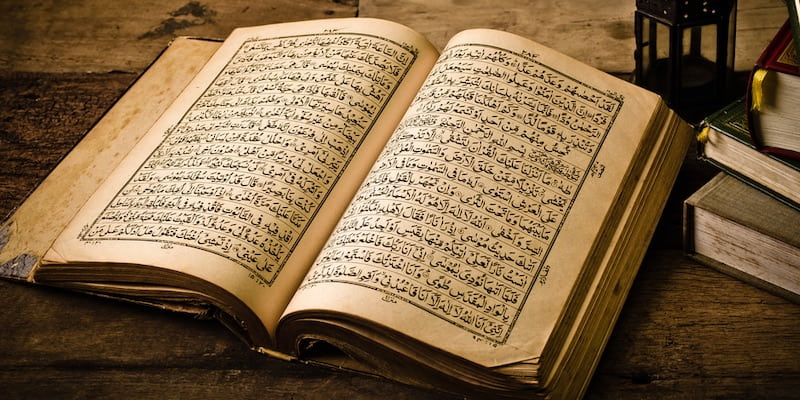
The holy book of Muslims is the Koran also called Alcoran or Quran, where it is believed that the word of Allah is contained, revealed to the prophet Muhammad by the angel Gabriel (Jibril in Arabic). Its name probably comes from Arabic al-qur'anwhich means “recitation.”
According to religious tradition, while the prophet was alive, the words he received from God were transmitted orally and, in some cases, written down on physical media, such as parchment. However, It was during the caliphate of Utman ibn Affan, between 644 and 656, when the parts transmitted by written and oral means were compiled and standardized and were organized in their official version of 114 suras (types of chapters divided into verses).
In the Quran, mythical and religious characters from Jewish and Christian traditions are mentioned, such as Adam, Noah, Abraham, Moses or Jesus, who are considered prophets of God, that is, Islamic prophets. However, in the Islamic tradition the last and most important of the prophets is Muhammad, whose life and teachings (called Sunnah) are taken as a model and guide of conduct, narrated in texts called hadiths, since the Quran contains very few details about his life.
The Quran focuses on the continuity of Allah's message through the prophets, on the ethical, legal and religious rules that the faithful must follow, on the fight against infidels and on the belief in the final judgment.
It was written in classical Arabic, a language in which it is usually recited during the liturgy although today it has been translated into countless languages. Translations are considered versions of the original, never equivalent to it, and their purely didactic value is recognized, since only the original literally transcribes the words revealed by God. Even so, some faithful consider that the earthly Quran is a partial reproduction of the true, “eternal and uncreated” Quran, which dwells in the heavens.
Islam beliefs
Islam believe in the existence of only one god, Allah creator, sustainer and ruler of the universe, who has revealed himself to different prophets since the beginning of time, such as Abraham, Moses and Jesus. Although there are similarities between the Muslim conception of God and that of the other two great monotheistic religions, Christianity and Judaism, there are also differences.
For example, in Islam God is unique and indivisible, as in Christianity, but it does not share the Christian dogma of the trinity (that God is one and triune: Father, Son and Holy Spirit). Furthermore, in Islam God is unrepresentable and the worship of images or representations is not permitted while in the majority currents of Christianity (Catholicism and Orthodoxy) the veneration of Jesus, the Virgin Mary and the saints through their images is admitted.
The sacred text of Islam is the Koran considered the only one that was not misrepresented over the years. It proposes the existence of angels, spiritual creatures who serve as intermediaries between humanity and the creator, and who never disobey his commands.
Islam too believes in predestination and that Allah's will determines everything that happens whether harmful or beneficial, since he is the one who decides the destiny of human beings by granting them the ability to do good or evil and testing them throughout their lives.
Another important concept within Islam is that of jihadwhich in Arabic means “effort” or “struggle”, and refers to the effort to follow the path of God and spread his word among the unbelievers (through persuasion or force). Although a peaceful reading of the concept of jihadsome radicalized movements (sometimes called jihadists) relate it to the military obligation that was part of the early Islamic expansion and therefore interpret it as a call to apply violence to impose their own interpretation of Islam on the world.
Lastly, Islam believes in a life after death, as well as a final judgment before Allah in which each person will receive from the angels a book with all their earthly actions, both their good deeds and their sins. This will occur on the Day of Resurrection or Yawn al-Qiyamahwhen those who did good will be rewarded with the delights of paradise and those who did evil will be condemned with the torments of hell.
Islam symbol
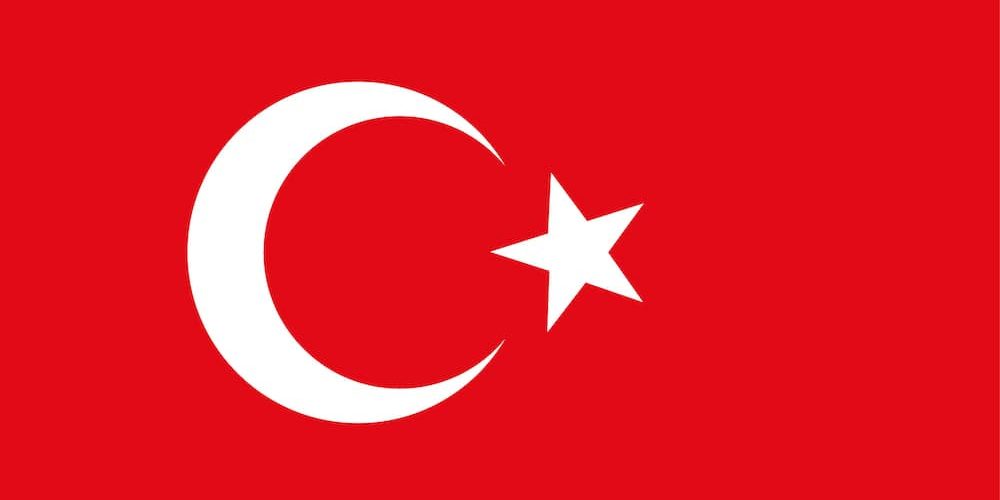
Just as Christianity is identified with the cross, The symbol with which Islam is traditionally associated is the crescent and especially the crescent and star: a crescent with a star on its concave side.
Its origin dates back to Greco-Roman times in the city of Byzantium, where it was associated with the Romanized version of the goddess Artemis, Diana the huntress, who used to wear a crescent on her head with the tips facing upwards, as if they were horns. The crescent with the star began to be used on coins and military insignia.
This symbol passed to the Ottoman Empire, perhaps even before the 15th century conquest of Constantinople (capital of the Byzantine Empire), and became so associated with Islam ever since that Today it appears on many flags of Muslim nations such as Türkiye, Algeria, Tunisia, Libya, Pakistan, Mauritania, Malaysia and Azerbaijan.
Rites or “pillars” of Islam
There are five main religious rites and practices of Muslims and they are known as the “pillars” of Islam:
- The shahada or profession of faith. It is the basis of belonging to the Muslim faith. It consists of pronouncing at least once in your life, in front of witnesses, the statement that dictates that: “There is no God but Allah, and Muhammad is his prophet.”
- The salat or prayer. It is the ritual prayer that must be performed five times a day: at dawn, at noon, at mid-afternoon, at dusk and at night, always orienting the body towards Mecca. Every Friday at noon there should be a community prayer in the mosque.
- The zakat, Zakah or obligatory alms. It is a percentage of the wealth that the faithful must pay annually to the State in grain, livestock or money so that it is distributed among the less fortunate. In today's Muslim states, it is replaced by national taxes and voluntary individual donations to charity, except in countries like Saudi Arabia that maintain the traditional practice.
- He sawm or fasting. It is a ritual fast that must be done during the month of Ramadan, which is the ninth month of the Islamic lunar calendar. Adult Muslims must abstain from eating, drinking, smoking and sexual contact from sunrise to sunset. The only exceptions are the elderly, women during menstruation, or after childbirth, and sick people, although these must, to the extent possible, compensate at another time of the year or through help to third parties.
- The hajj or pilgrimage to Mecca. It is a great pilgrimage to the sacred monuments of Mecca that every Muslim who has the resources and health for it should make at least once in their life. Upon entering Mecca, the faithful must reach the state of ihram or sacredness, dressing in two clean, seamless garments and avoiding certain activities, such as sexual practice. The pilgrimage is celebrated in the month of Dhu al-Hijjah (last month of the Muslim calendar) and one of its main activities consists of walking around the sanctuary of the Kaaba seven times, inside the great mosque of Mecca, and in some cases kissing and touch the Black Stone that is located in one of its corners.
On the other hand, there is an Islamic law or Sharia. It is considered a divine law that embodies the will of Allah and that every Muslim must respect both in public and in private. It contains guidelines for each situation of daily life, among which the duty to correctly comply with ritual practices, legislation on marriage and family, and the prohibition and punishment of practices such as homicide, adultery, consumption of alcohol and gambling.
Depending on the degree of commitment of a Muslim State to Shariathis law can be practiced to the letter or it can only be the inspiration of modern laws. Currently, only some countries retain the Sharia as the basis of the entire legal system (e.g. Saudi Arabia and Afghanistan), while most Muslim countries accept the influence of Sharia in legislation on family and inheritance matters.
Women in Islam
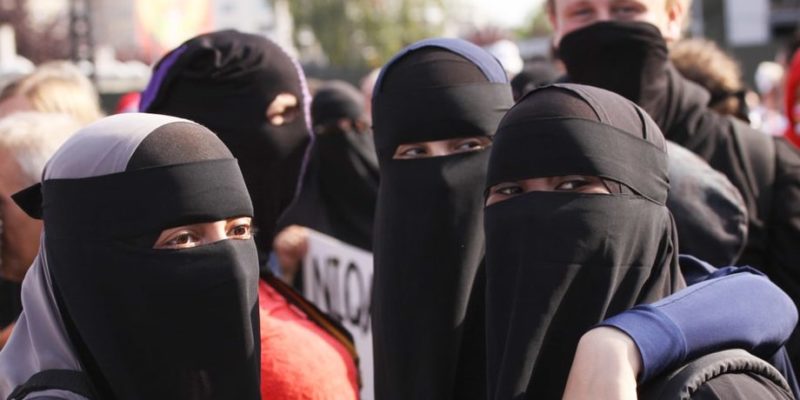
A topic on which much has been written is the role that women occupy within Islam, according to Arab traditions and the sacred texts of this religion. Islamic law speaks of “complementation” between men and women, since “believers and believers are allies of each other” (Quran 9:71). However, It also states that Allah created women to be respected as mothers, wives, daughters and sisters that is, in close relationship with the family and domestic sphere.
In this sense, the Quran makes clear the man's command over his wife, just as the Old Testament of the Bible also does. Therefore, the rights of women and their possibilities of participation in civil and political life depend on the degree of tolerance, customs and customs and the level of separation that exists between State and religion in each Islamic country.
Thus, there are very strict nations regarding the female role in issues such as marriage, divorce, and even clothing guidelines. Whether by personal choice or by social imposition, Women are generally required to cover their hair, torso, limbs, or even their entire body when outside the home or in the presence of strangers. Likewise, female genital mutilation and child marriage, although tolerated in some places and among some social sectors of Islam, are not typically Islamic customs.
On the other hand, the polygamy It is allowed in some nations especially if the man has enough resources to give each of his wives a decent life. In exchange, he is completely responsible for them, and must grant them permission to go out, study, or perform certain tasks.
References
- Afsaruddin, A. (2023). The Oxford Handbook of Islam and Women. Oxford University Press.
- Blatt, R. (2016). Bible, Koran, Tanakh. Three readings about the same God. Turner.
- Filoramo, G., Massenzio, M., Raveri, M., & Scarpi, P. (2000). History of religions. Criticism.
- Ruthven, M. (2012). Islam: A Very Short Introduction. Oxford University Press.
- Schimmel, A., Mahdi, M.S., and Rahman, F. (2024). Islam. Encyclopedia Britannica. https://www.britannica.com/
- Yassine Bendriss, E. (2013). Brief history of Islam. Nowtilus.



